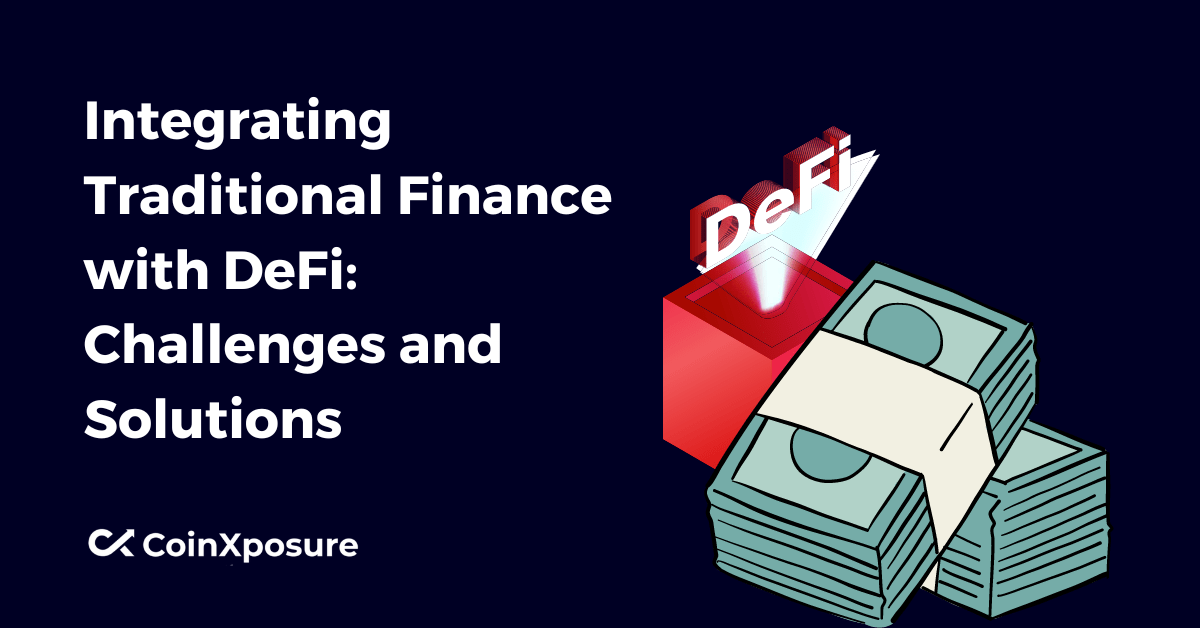
Integrating Traditional Finance with DeFi – Challenges and Solutions
The convergence of Traditional Finance and Decentralized Finance (DeFi) presents a transformative opportunity, promising increased efficiency and accessibility in the financial landscape.
However, this integration is not without its challenges. This exploration delves into the obstacles when marrying these two distinct financial realms, highlighting regulatory complexities, risk management concerns, and interoperability issues.
Moreover, it offers insights into viable solutions that aim to bridge these gaps, paving the way for a harmonious synergy between the traditional and decentralized financial systems.
Challenges in Integrating Traditional Finance with DeFi
Integrating Traditional Finance with DeFi poses several challenges:
- Regulatory Hurdles
- Risk Management
- Interoperability
Regulatory Hurdles
Divergent Regulatory Frameworks: Varied regulations across jurisdictions complicate seamless integration.
Compliance and Legal Issues: Navigating complex legal landscapes to ensure adherence to traditional financial norms.
Risk Management
Smart Contract Risks: Vulnerabilities in smart contracts expose systems to potential exploitation.
Security Concerns: DeFi platforms face cybersecurity threats, demanding robust security measures.
Interoperability
Bridging Legacy Systems with Blockchain: Integrating decentralized blockchain technology with existing legacy infrastructures.
Standardization Challenges: Lack of uniform standards hinders smooth interoperability between traditional and decentralized systems.
Solutions to Address Challenges
Addressing the challenges in integrating Traditional Finance with DeFi involves implementing strategic solutions:
- Regulatory Alignment
- Enhanced Security Measures
- Improved Interoperability
Regulatory Alignment
Collaborative Efforts for Regulatory Clarity: Industry collaboration to establish clear regulatory frameworks accommodating both traditional and decentralized aspects.
Frameworks for Compliance in Hybrid Systems: Develop protocols ensuring compliance with existing financial regulations while incorporating DeFi elements.
Enhanced Security Measures
Audits and Code Reviews: Regular audits and thorough code reviews to identify and rectify vulnerabilities in smart contracts.
Insurance Protocols for Smart Contracts: Introducing insurance mechanisms to mitigate risks associated with potential smart contract failures.
Improved Interoperability
Development of Cross-Chain Solutions: Creating interoperable solutions that facilitate seamless transactions between various blockchain networks.
Standardization Initiatives: Initiatives to establish common standards enabling smoother integration between traditional and decentralized systems.
Technology Integration
In the pursuit of integrating Traditional Finance with DeFi, technology plays a pivotal role. Key aspects of technology integration include:
- Blockchain Adoption by Traditional Financial Institutions
- Utilizing Oracles for Real-world Data in DeFi
- Smart Contract Integration with Legacy Systems
Blockchain Adoption by Traditional Financial Institutions
Embracing blockchain technology to enhance transparency, security, and efficiency in traditional financial processes.
Utilizing Oracles for Real-world Data in DeFi
Integration of oracles to connect decentralized systems with real-world data, enabling DeFi platforms to respond to external events and conditions.
Smart Contract Integration with Legacy Systems
Developing mechanisms to seamlessly integrate smart contracts into existing legacy financial systems, fostering interoperability and continuity.
The harmonious integration of these technological components is crucial for successfully fusing Traditional Finance and DeFi.
Future of Traditional Finance with DeFi
Dynamic shifts and evolving trends mark the future outlook for integrating Traditional Finance with DeFi:
- Potential Evolution of Regulatory Landscape
- Technological Advancements in DeFi
- Growing Acceptance and Adoption by Traditional Institutions
Potential Evolution of Regulatory Landscape
Anticipation of regulatory frameworks adapting to accommodate the nuances of integrated financial systems, fostering a more supportive environment.
Technological Advancements in DeFi
Continuous innovation and refinement in DeFi technologies, potentially addressing current challenges and introducing new capabilities.
Growing Acceptance and Adoption by Traditional Institutions
Increasing recognition and adoption of decentralized technologies by traditional financial institutions, leading to broader acceptance and collaboration.
The trajectory suggests a transformative journey, where regulatory adaptations, technological advancements, and increased acceptance converge to shape a more integrated and resilient financial ecosystem.
Conclusion
Integrating Traditional Finance with DeFi holds immense potential for reshaping the financial landscape.
Strategic solutions are emerging despite challenges such as regulatory complexities, risk management concerns, and interoperability issues.
Collaborative regulatory efforts, enhanced security measures, and improved interoperability are key pillars in overcoming obstacles.
As technology continues to play a central role in this integration, blockchain adoption by traditional institutions, using oracles for real-world data, and smart contract integration with legacy systems stand out as crucial components.
The future outlook anticipates an evolution in regulatory frameworks, ongoing technological advancements, and an increasing acceptance of decentralized technologies by traditional financial institutions.
The journey toward a seamlessly integrated financial ecosystem represents a transformative shift with the potential to enhance efficiency, transparency, and accessibility in the broader financial landscape.





